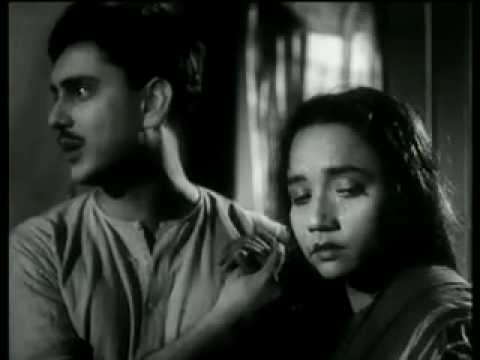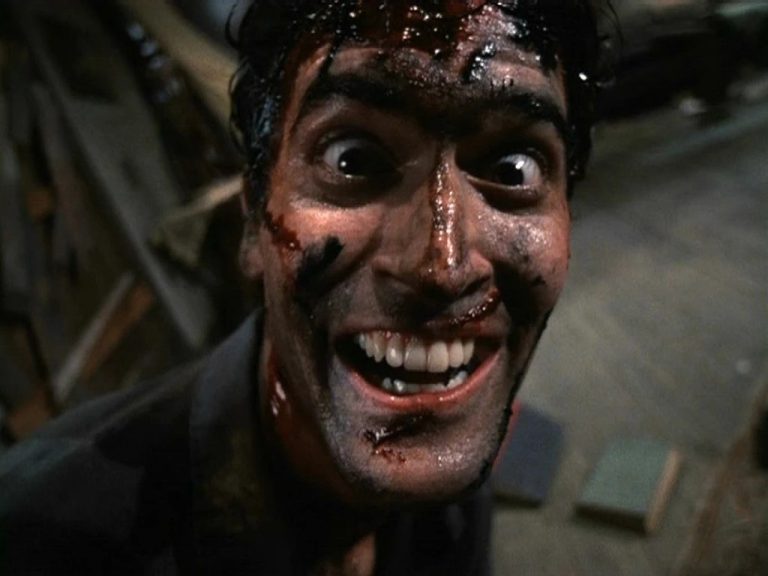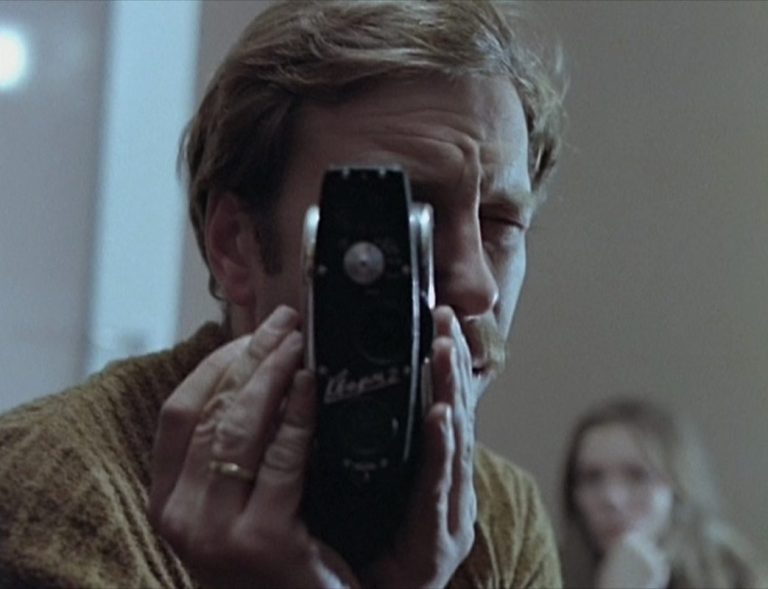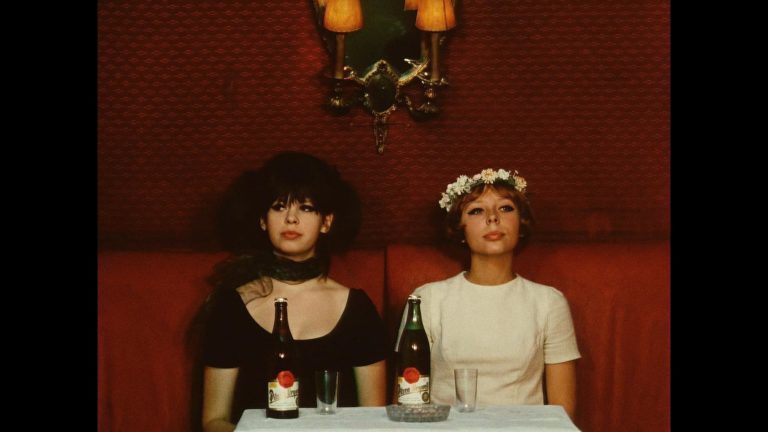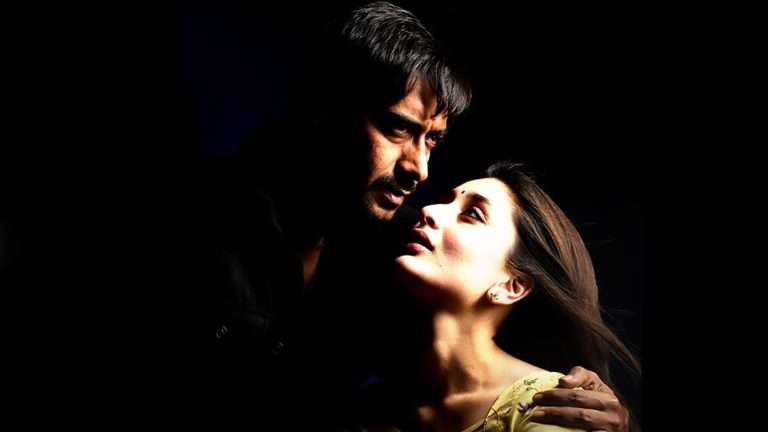Ritwik Ghatak remains misunderstood and distant from most lives. Even cinephiles who believe that a linear comprehension would take them to a place where his works and ideology can be a digestible art know very little about his intention and suppressed ideas. This has always been the case. Unfortunately, this is always going to be the scenario. It is tough to frame the entirety of Ghatak, the storyteller, writer, and activist, by a single individual. “Unmechanical: Ritwik Ghatak in 50 Fragments,” edited by Shamya Dasgupta, thus weaves voices from different time frames and belief systems to work together and construct a man who remains a spearhead in the Bengali cine-verse.
Also Read: The Autonomy of Sound in Ghatak – Part I: Sound, Silence, and Partition in ‘Subarnarekha’
Ghatak was the one who changed how filmmaking is approached and visual art should be projected before people who are not just viewers or commodities, but an integral part of Ghatak’s own art. People often find it baffling and difficult to endure a man who, to this date, cannot be called an opportunist, and had the spine to say or show things without worrying about disturbing social normalcy. He was a healing albeit bitter gourd.
Safdar Hashmi’s essay on Ritwik, named “Indian Cinema didn’t have a language before Ritwik Ghatak,” is an incredible take on cinema by a person from the theatre. Most people keep Satyajit Ray’s filmmaking on the pinnacle, but his films had a silence that his audience was able to digest. At the same time, Ghatak’s films were politically loud and refrained from keeping the internal world away from politics.
After the famine and a serious food crisis in Bengal, Ghatak took the initiative to show the truth. Not Ray. But the state and its people were never inclined towards the representation of their own vulnerabilities. So, when Hashmi writes about the distance between most films (which ran in parallel with Ritwik’s works) and Calcutta, he is exposing their hypocrisy. But a visceral nostalgia has always overshadowed Bengalees from accepting their own bleak reality.
So, Hashmi points out that while the dreamy “Pather Panchali” was accepted by the elites, “Nagarik” was taken down from the cinema halls. From “Subarnarekha” to “Jukti Tokko Goppo,” a constant mental torture was inflicted upon Ghatak by several film associations of the state and also by the forefathers of those who now adore his craft. Hashmi mentions that reviewers called him a supreme structuralist and a man with a contradictory personality.
This was happening when Ray was being marketed by the elite community since he made films that made statements against the West. Ghatak did the same but stood against his own people, who deliberately participated in hiding their role in the downfall of the state economy and elevating socio-political hegemony. Then what’s the language of Ghatak’s films? It is truth. It is his raw approach addressing the state’s gross reality.
Pratiti Devi’s essay, “Ritwik Wrote the Script of Titas Ekti Nodir Naam on my Saree,” is an honest take on the man who developed films that spoke about refugees. His films addressed the very issues that India would grapple with decades later, after the implementation of the NRC and CAA — more than fifty years ahead of their time. While everyone in the Hindi and other film industries was trying to give shape to an India that’s democratic and secular to appeal to and attract the independent audience, Ghatak was showing that the same country was not even interested in addressing the starvation of refugees who fled from East Bengal. Not only Bengal.
Even the North-Eastern states of India were running short of food, and there was no one to show the truth. Today, we see hope in a news reporter who has an erect spine. Ghatak had that, but we never gave him the acknowledgement he deserved. Watching his films merely for craft would be a criminal offense. The man was deeply affected by the partition of India, and we need to have a similar sentiment inside our hearts when we watch, read his works.

In the Qaushiq Mukherjee, also known as Q, directed documentary “Nabarun,” Nabarun Bhattacharya says that Bengalees have always admired ‘refined mediocrity’ and so they could never tolerate Ritwik Ghatak. If we go through Nabarun’s poetry and stories (especially “Harbart”), we will find his deep love for Ghatak’s vision and which sprouted out of the belief that every state is susceptible to major conflicts and violence by its own people. So, in his essay “The Life of a True Artist,” his anger against the filmmakers, critics, and audience of cinema was a consequence of the constant suppression of Ghatak’s voice.
People question Nabarun’s position of privilege and call him a hypocrite since he denounced the capitalists by being one. It isn’t true. The man questioned his own position in his novels, and Harbart was not just a character; it was Nabarun’s mind. When he wrote that Ritwik didn’t try to impress the Western audience, he told the truth. Ghatak was sleeping on footpaths and dirty lanes, but never stopped making films on his own terms without any audience. He was denouncing the Western formula of drawing an audience to films by following specific schools and ideologies.
In “Monster: The Ed Gein Story,” we meet a Hitchcock who knew that his audience would come to see “Psycho” because the film is about a killer’s mind, which worsens because of the presence of a society that endorses hatred. It was an old-school formula of creating a byte. Ghatak never created that byte. He was not pessimistic. He believed in projecting the truth without wrapping it up with beauty. Nabarun punches the critics who said that Ritwik lacks discipline and that there is no grammar in his cinema. He writes, “bloody fools, he was creating the grammar of cinema.” Why?

Ghatak was louder than Guru Dutt and framed chaos without putting dialogue in it. Today, when we see a chaotic camera moving around Abhay Deol in the song ‘O Pardesi’ from the film “Dev D,” we call it a masterpiece. But Ghatak did the same when he filmed chaos through a camera running in circles around Satindra Bhattacharya in the film “Nagarik.”
Did we ever refer to it as a masterclass by someone who knew nothing about the craft of cinematography or even the basics of camerawork? But when intellectuals like Nabarun pointed it out, we feel threatened because of his social position. For how long are we going to run from our own blunders and accept our failures on multiple levels? How long will we crib over social position to make the same mistakes our forefathers did? Nabarun and Ghatak shed their privilege by staying honest to their own self.
Jai Arjun Singh, in his essay “A Sort of Homecoming: Rediscovering Ghatak,” has a profound understanding of Ghatak as a storyteller and compares his work with his contemporaries. Ray and Ghatak have always been kept on two extreme poles since while the former nudged the social comprehension and was accepted, the latter was viciously criticized for being uncomfortable and pedantic. Singh highlights the lack of accessibility that regional filmmakers faced after the influx of the global market.
While Satyajit Ray’s international acclaim allowed filmmakers from other countries to reach Indian audiences with ease, homegrown voices like Ritwik Ghatak remained largely invisible. It wasn’t until Indira Gandhi endorsed his vision and appointed him to a position of influence at the Film and Television Institute of India that he gained some recognition. Yet even then, his films were not widely accepted — because, much like Fernando Pessoa, Ghatak refused to deceive his audience.
While Ray was criticized by right-wing extremists after the release of “Devi,” the national and international film associations supported his intention. But the same did not happen with Ghatak. The local market of India did not allow Ghatak’s films to reach the international market. It was bound to happen since anyone who creates a gigantic ball of discomfort will be stopped, since that ball is not a void.
It is a space where more than one reality is identified, and Ghatak became the voice of the voiceless in that ball. They discarded that ball, knowing that if they threw the ball out, the storyteller would fade from the memory like stories and many people do when poverty and mental oppression become their close companions.
Singh acknowledges that he could not bear the relentlessly depressing frames of Ghatak’s films while watching them in bad prints. But later, when a more mature man watched and observed how the humour of Ghatak coalesced with the pathos he felt, it was a rediscovery. Perhaps, he came to identify himself as a refugee who has been eroded from his origin, and he resonates with Ghatak’s longing for a home for those who do not have one. His escape from his own home was directed towards finding many other homes.
People in poverty look at everyday objects from a different perspective. It is not because of what they are dealing with. Rather, it is because of what they want or need in times of crisis and absence. Sumana Roy’s essay, “Ritwik’s Trees,” is an observation of how Ghatak framed trees in his films and how each one of those frames had a clear objective. Roy correlates the tree of “Meghe Dhaka Tara” with that of “Sahaj Path,” a book framed in linocuts by Rabindranath Tagore on Bengali alphabets, their pronunciations, and how they can be used in sentences.
Dig Deeper: Understanding the Post-Partition Riverscape of Padma in Ghatak’s ‘Komal Gandhar’ (1961)
When children are asked to draw a tree, they draw a mushroom-like image, knowing that the vastness is what every tree keeps addressing. Roy also, in the analysis of the first shot of “Meghe Dhaka Tara,” writes that even though their immobility is the calmness Ghatak wanted to focus on, when the protagonist Nita comes out of a tree’s shadows, Ghatak shows that she is proceeding towards an unsafe territory from its safe embrace. People do that mostly when they head to their jobs or walk back into their toxic homes.
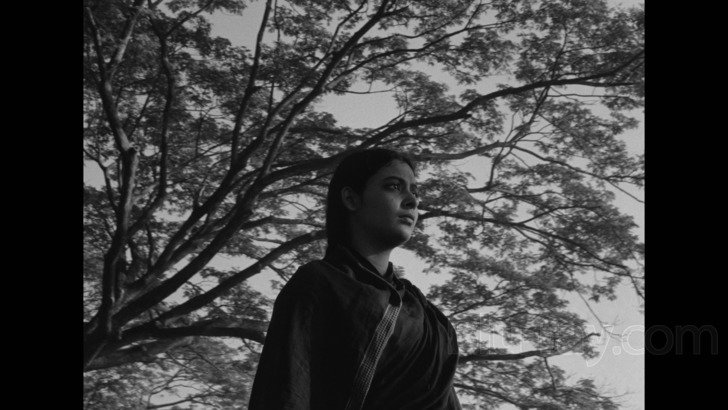
She mentions that while Tagore’s approach towards trees was completely based on calmness, Ghatak tried to bring chaos and a certain kind of consciousness through the trees in his frames. The latter focused on keeping them the way they are. Tagore maintained a clear discrimination between the wild and domesticated trees, whereas Ghatak made their presence an integral part of his films without keeping a premeditated thought in mind. The filmmaker wanted to decode how trees appear in a poor man’s surroundings.
There existed no grammar that could keep them neat and in order, but they were there to simply show that they were witnessing the violence that was being inflicted on them by people in power. Most of Ghatak’s music was inspired by Mozart or Tagore, and so, when Roy dissects the usage of ‘Ghorete Bhromor Elo Gunguniye’ from the perspective of migration, she makes it clear that the filmmaker found the trees as abodes for those who are abodeless. Yet his focus on the bamboo during the song is a clear indication of how the refugees have lost the beauty (leaves). All they desire now is to stay with each other like bamboo shoots do.
Since Ghatak’s films have always been about the plight of partition, the change in environment in his films, while progressing from one frame to another, showed the changes people had to accept during partition. The toughest one was to leave the hopes they had pinned on their homeland, the people fighting for their rights, and the Gods they worshipped. But Ghatak cleverly narrows down the difference trees make in the frames to show that even after losing their homes, they are trying hard to make a home out of their new land. Roy’s analysis is not always about the glimmer that trees bring in Ghatak’s frames.
She also figures out how the filmmaker uses trees to cast a shadow on the characters, who are both strong and vulnerable, to highlight how the same trees that project hope can also take away the light from their lives. His humane approach towards trees went unnoticed, and for the sake of debate, people simply talk about his depressing, morbid, and hurtful frames.
This raises a few significant questions: Did we isolate Ghatak by being selective towards his craft? While Satyajit Ray’s frames of trees attained glory, Ghatak’s cinematography was attacked selectively by keeping the overt scenes in the forefront. Why did we fail to resonate with Ghatak’s messages even when the filmmaker did not stylize his work to make us watch an alternate reality?
Ritwik Ghatak’s Bengal is not free. It has its own fears and beauty; strength and weaknesses; kindness and cruelty. Ratik Asokan, in his essay “A New Look at Ritwik Ghatak’s Bengal,” gets deeper into the secret peripheries of the state to bring out the mess Ghatak wanted to reduce by showing. It is a human trait to clean anything that’s messy. But to ignore it and lead a life without paying much attention to the mess is also a human trait. Ghatak’s Bengal is all about the latter.
His melodrama, while depicting families, functions as a provocation — he sought to disturb the complacency of a society that normalizes abuse, suppression, and moral policing. Asokan, at the same time, writes that Ghatak was an upper-caste, upper-class, educated Bengalee (bhadralok Bangali), but he never shied away from detesting his own belief system. So, while he was criticizing the capitalists, he was using Tagore’s songs to bring emotion into his frames. It was a contradictory but deliberate move since his animosity has been against those who misuse privilege and not against those who dream of good.
While “Subarnarekha” confronts caste, “Titas Ekti Nodir Naam” gives voice to the refugees. “Meghe Dhaka Tara” addresses the inner turmoil of a family that has faced the wrath of partition, and “Nagarik” projects the raw, outer upheaval of post-partition Calcutta. Asokan writes that the literature of Ghatak’s films can be compared to Dostoevsky’s pessimism, but, at the same time, the director never lost hope in his own people.
Today, when filmmakers and critics study Ghatak’s films, they often miss out the fact that Ritwik Ghatak was not here to simply direct films. He dared to see a dream where he was changing society. The fall of idealism in his films did not give birth to a realist. Rather, the idealism kept on growing inside him even after his films were brutally criticized by reviewers. Only an idealist could say that if you don’t let me make films, I will write books. If you don’t let me write, I will edit newspapers. But I will keep on creating something out of nothing.
Several voices were needed to introduce Ritwik Ghatak outside of what we have understood so far, with limited information. All these voices speak the same truth that the filmmaker believed in, but they also expand our vision and that of the director for our own comfort. Today, when we watch a close shot of a character with a shaky camera, we need to remember how Ghatak in the film “Meghe Dhaka Tara” shook his camera to bring out the chaos inside Nita.
Similarly, when present-day filmmakers shoot a scene with the camera focusing on the silhouette of the character by expanding the rest of the frame, we are reminded of that shot of Kishore from the film “Titas Ekti Nodir Naam,” where the entire sky filled the frame, but his haunting, quivering silhouette became the audience’s point of attention. A man who was forced by society to move towards alcohol, gambling, and chronic depression for creating art is not just a subject. He is a home that we need to study but with baleful eyes. Ritwik Ghatak was pushed to the brink of death by the society our forefathers lived in. It is our responsibility to keep his art alive since this is the only way to be one with our conscience.


